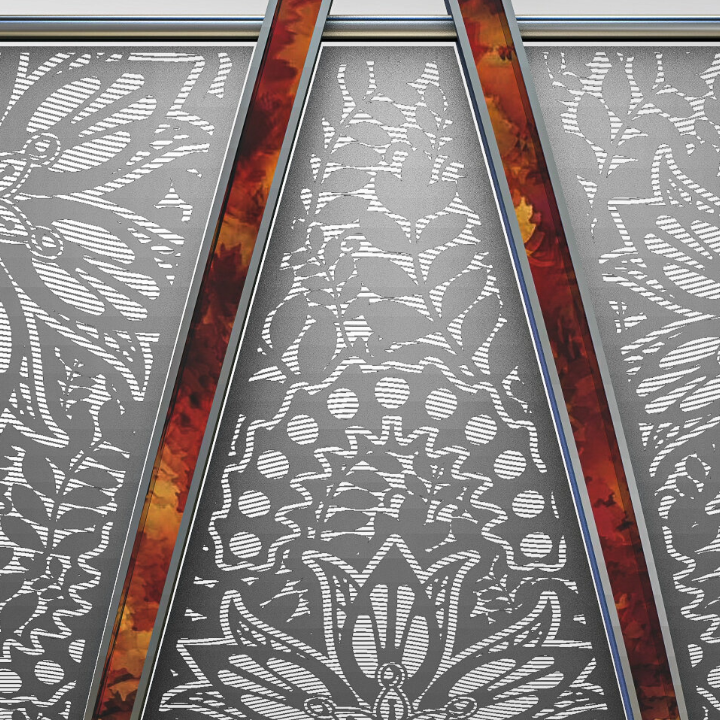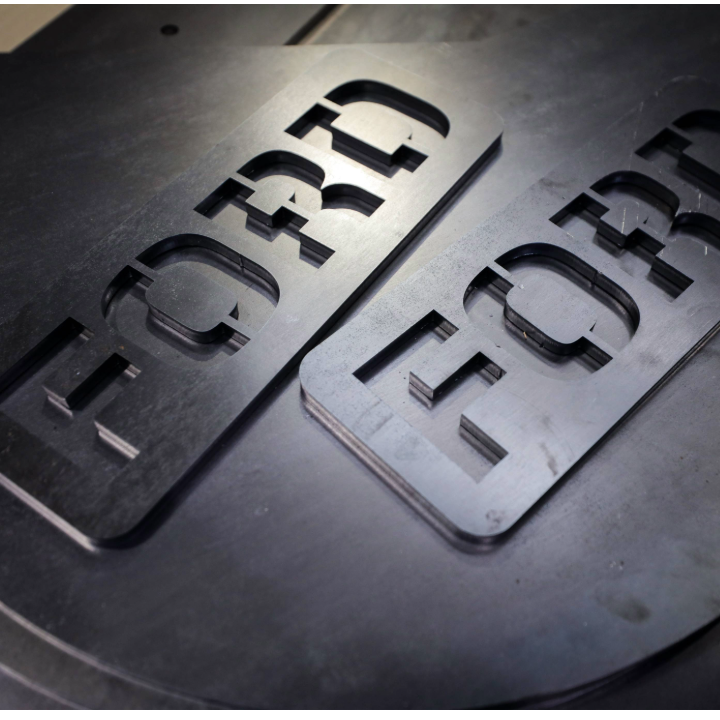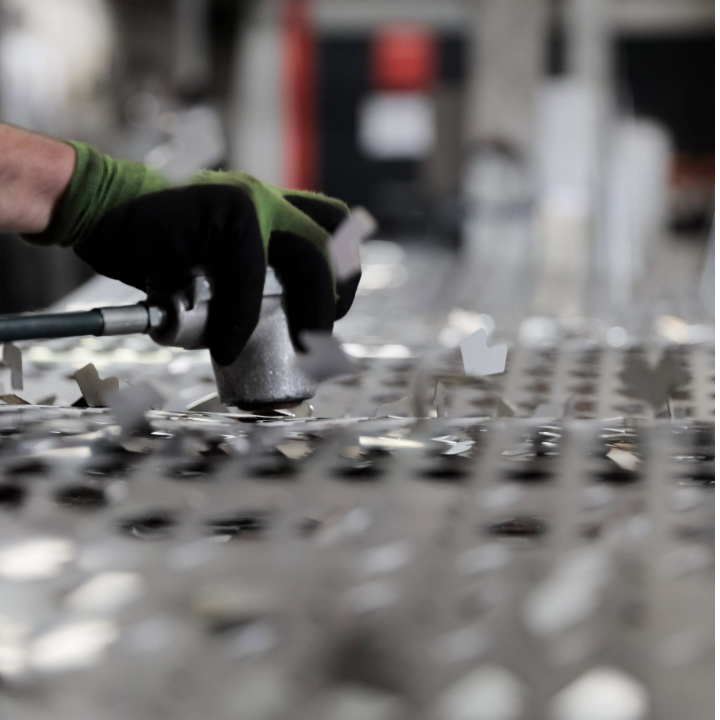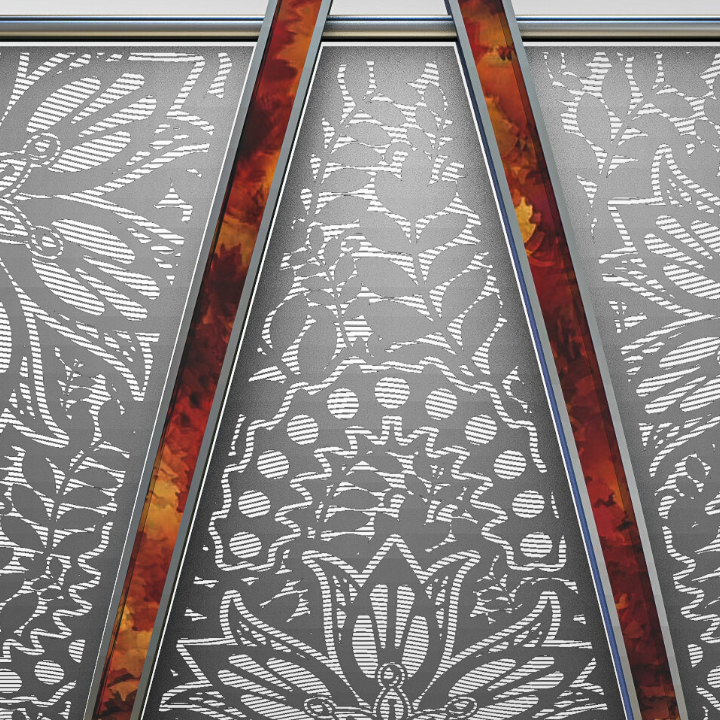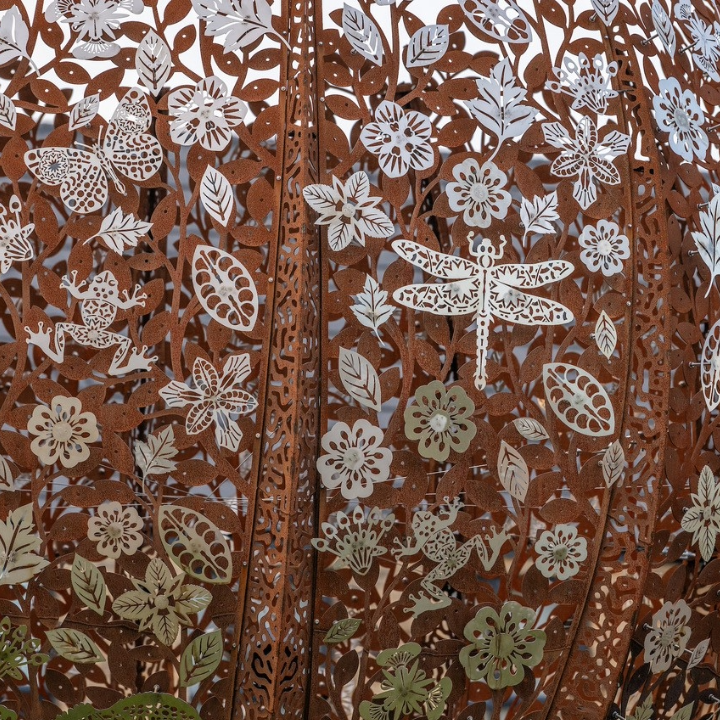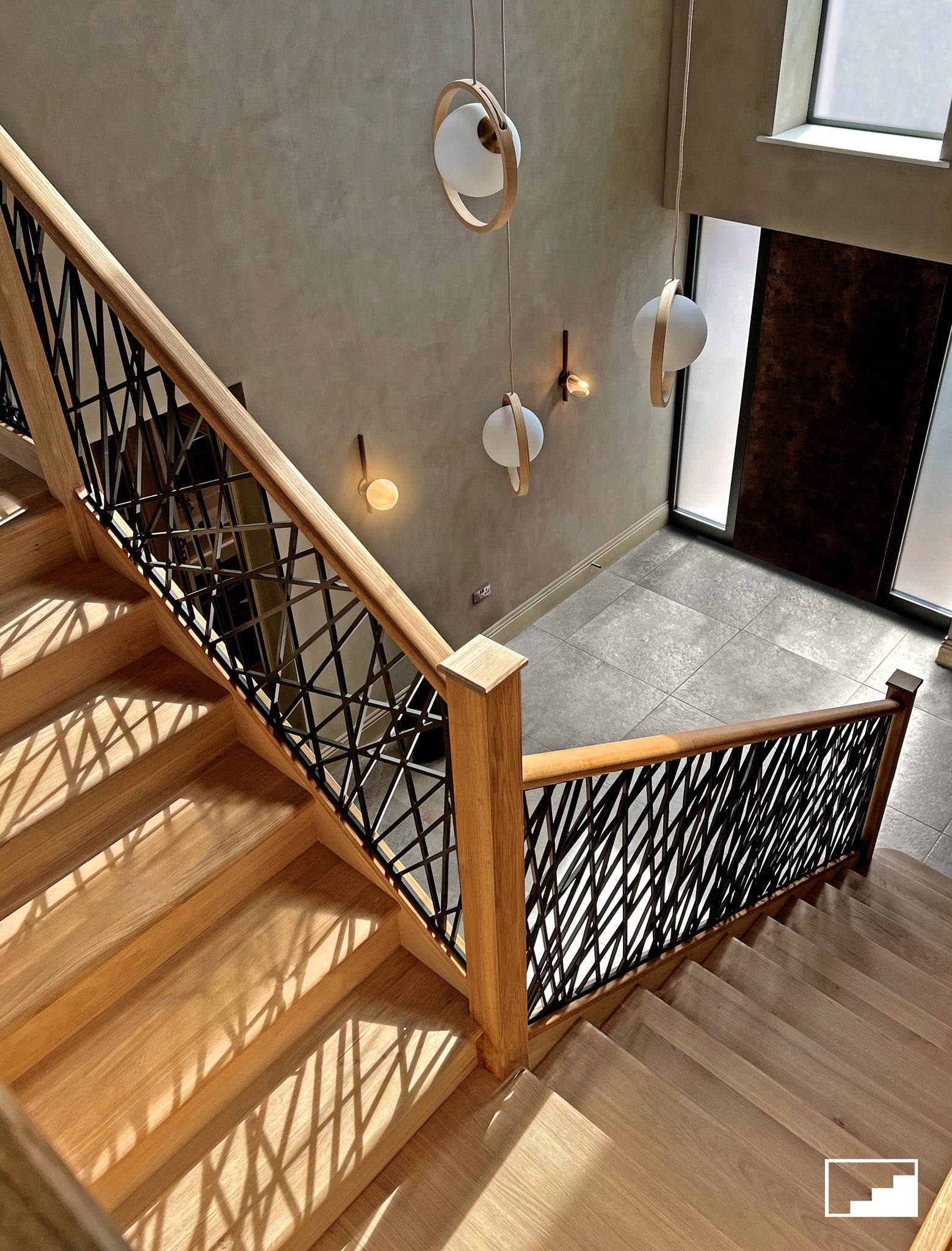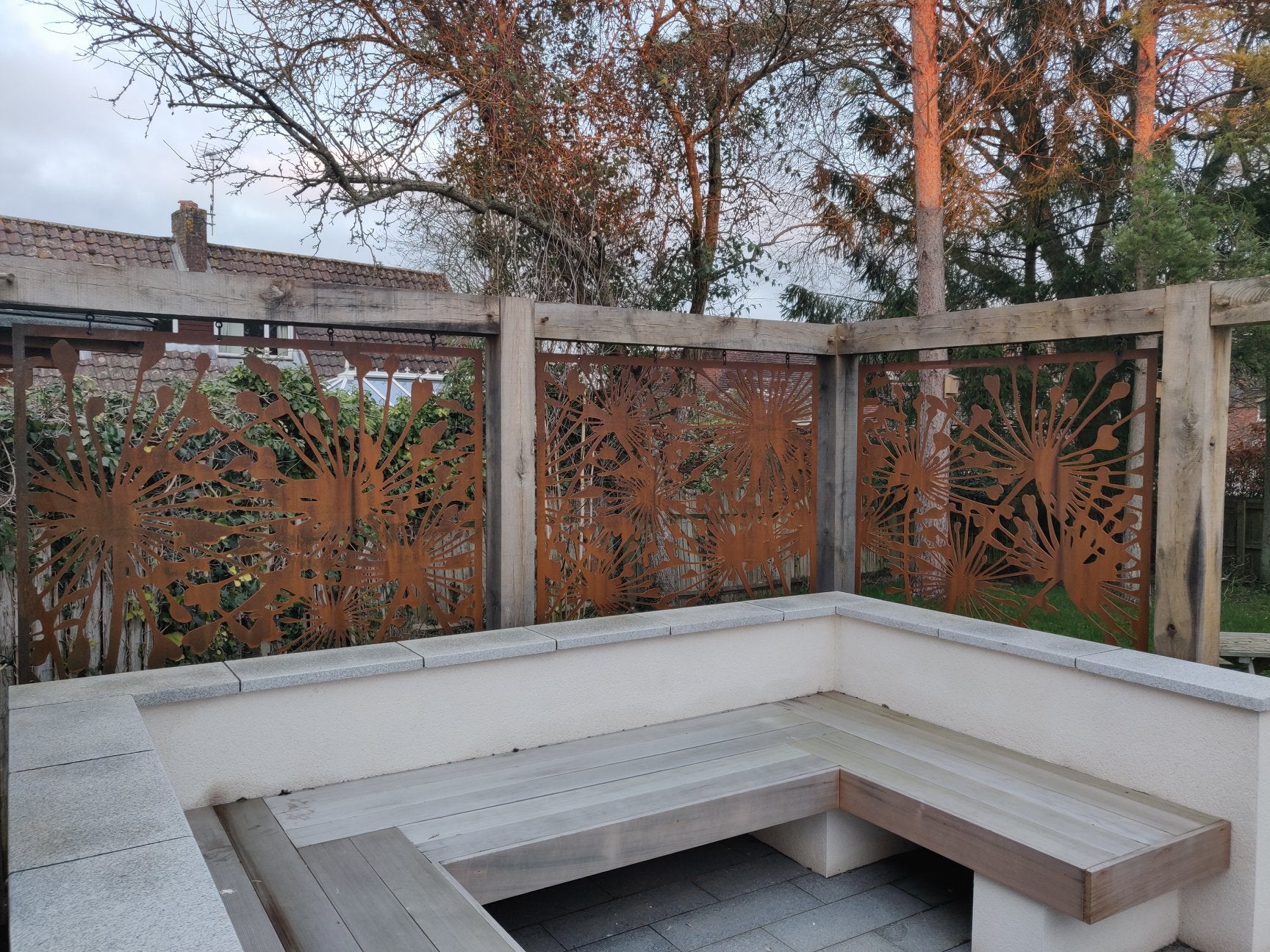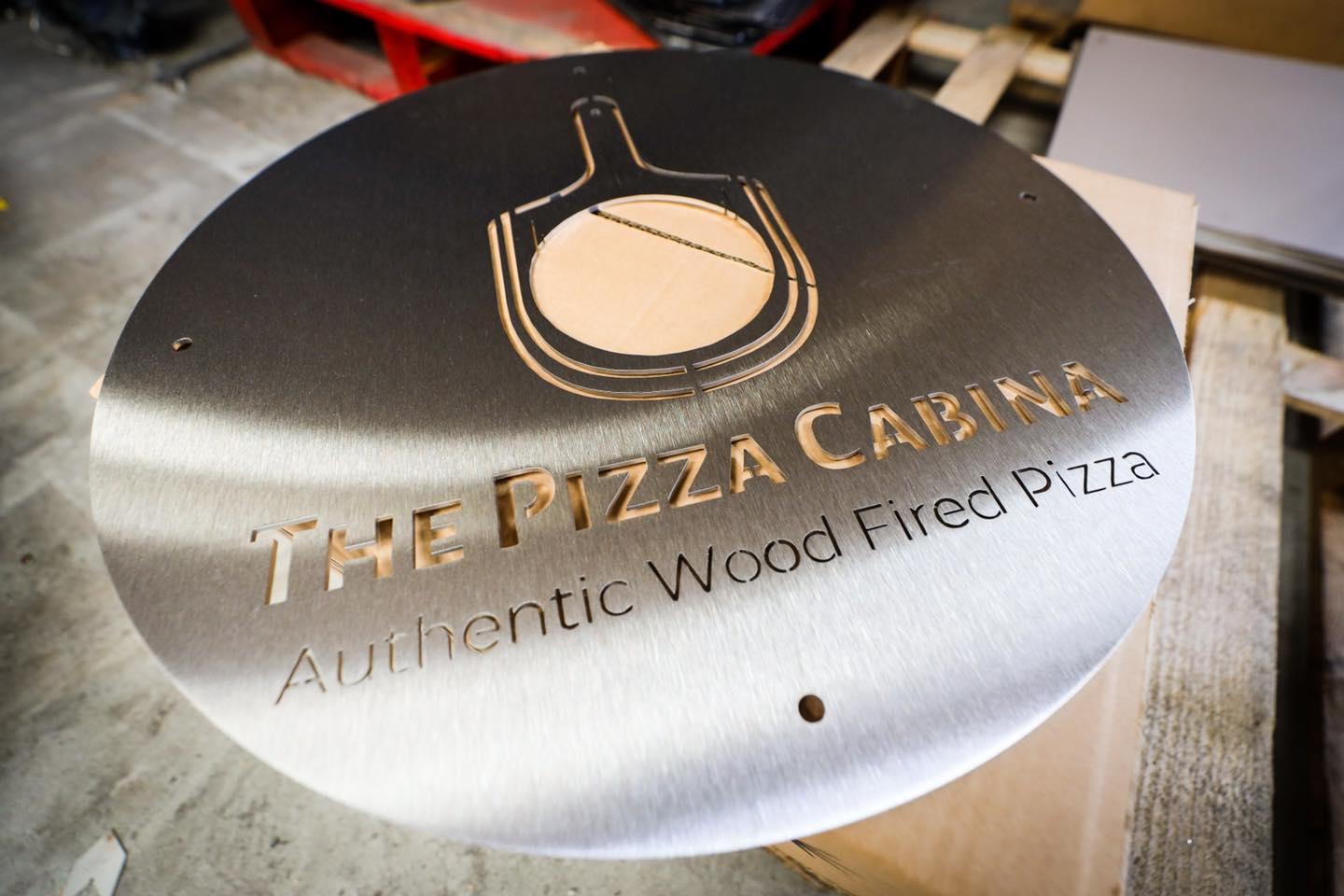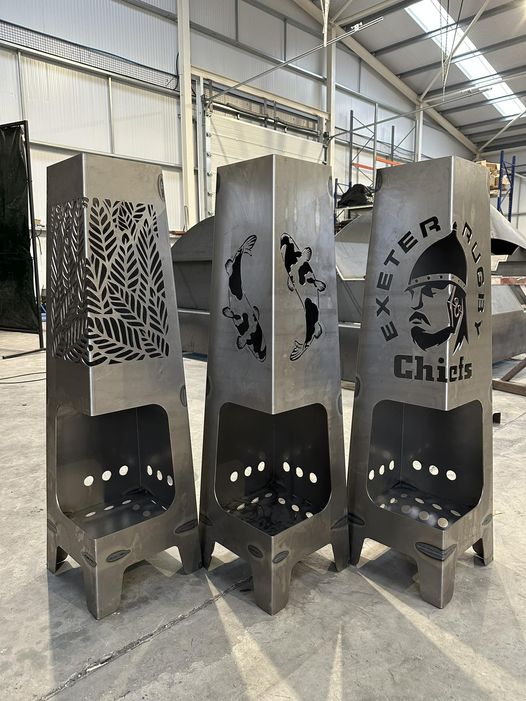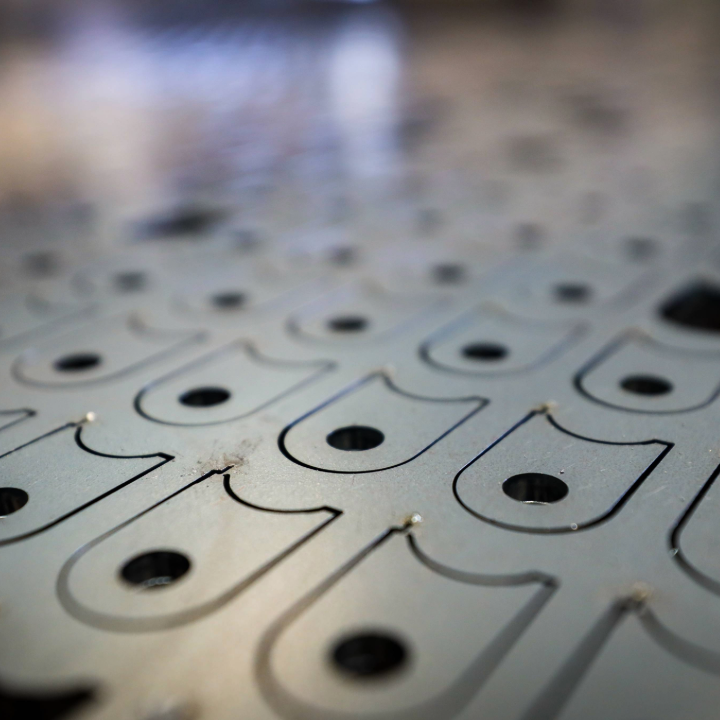Laser Cutting
Precision sheet metal cutting is at the very heart of our business. We are renowned for our excellent quality, cost-effectiveness and friendly service.
We offer 2 options for sheet metal cutting: fibre laser cutting and HD plasma cutting. These options are available in a range of sheet metals and thicknesses, including carbon steel/mild steel, stainless steel, high-strength steels, weathering steel as well as non-ferrous materials such as aluminium, brass, copper, and bronze. Additionally, we offer a free issue metal laser cutting service. With no minimum order fees or quantity restrictions, for low volume and prototyping, express fast track cutting service and cost-effective volume production LaserMaster has a sheet metal laser cutting service suitable for everyone.
For metal plates and profiles thicker than 25 mm, we recommend using our HD plasma cutting service.
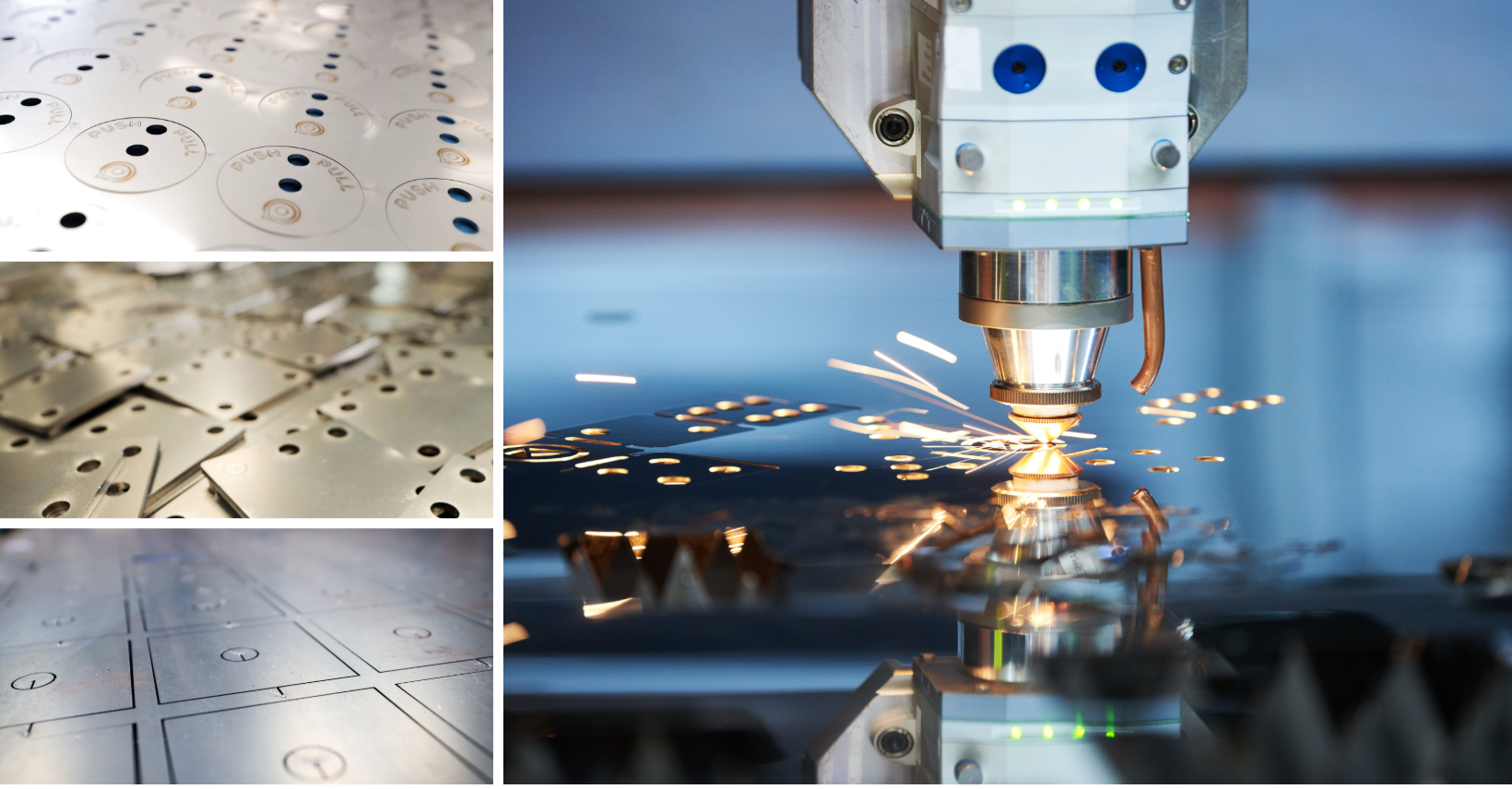
Friendly Service
Our team is experienced, efficient and professional but above all easy to talk to, we are happy to answer any questions you have.
Competitive Pricing
We have the capability to operate 24 hours a day, 7 days a week, allowing us to offer an express turnaround and high volumes.
Nationwide Delivery
We ship completed orders using a next day courier and pallet service, ensuring the quickest lead time from quote to delivery.
CNC Fibre Laser Cutting
CNC sheet metal laser cutting offers remarkable economy, precision, and high-quality profiles.
Operating three CNC fibre laser cutting machines, including Bystronic and Trumf. All handle sheet metal sizes up to 3000 mm x 1500 mm. Fibre laser cutting delivers unmatched results in sheet metal cutting and fabrication, ensuring precision, high quality, efficiency, flexibility, and superior output. When compared to other laser cutting methods such as C02 lasers, fibre lasers stand out for their precision performance, and faster pace with minimal material wastage.
Competitive Pricing On Production Runs
At LaserMaster, we understand the importance of maximising efficiency in sheet metal fabrication. That's why all our laser cutting machines are equipped with automatic sheet feeders, enabling continuous cutting operations 24/7 maximising efficiency in both time and cost, and enabling us to offer competitive pricing on volume production runs.
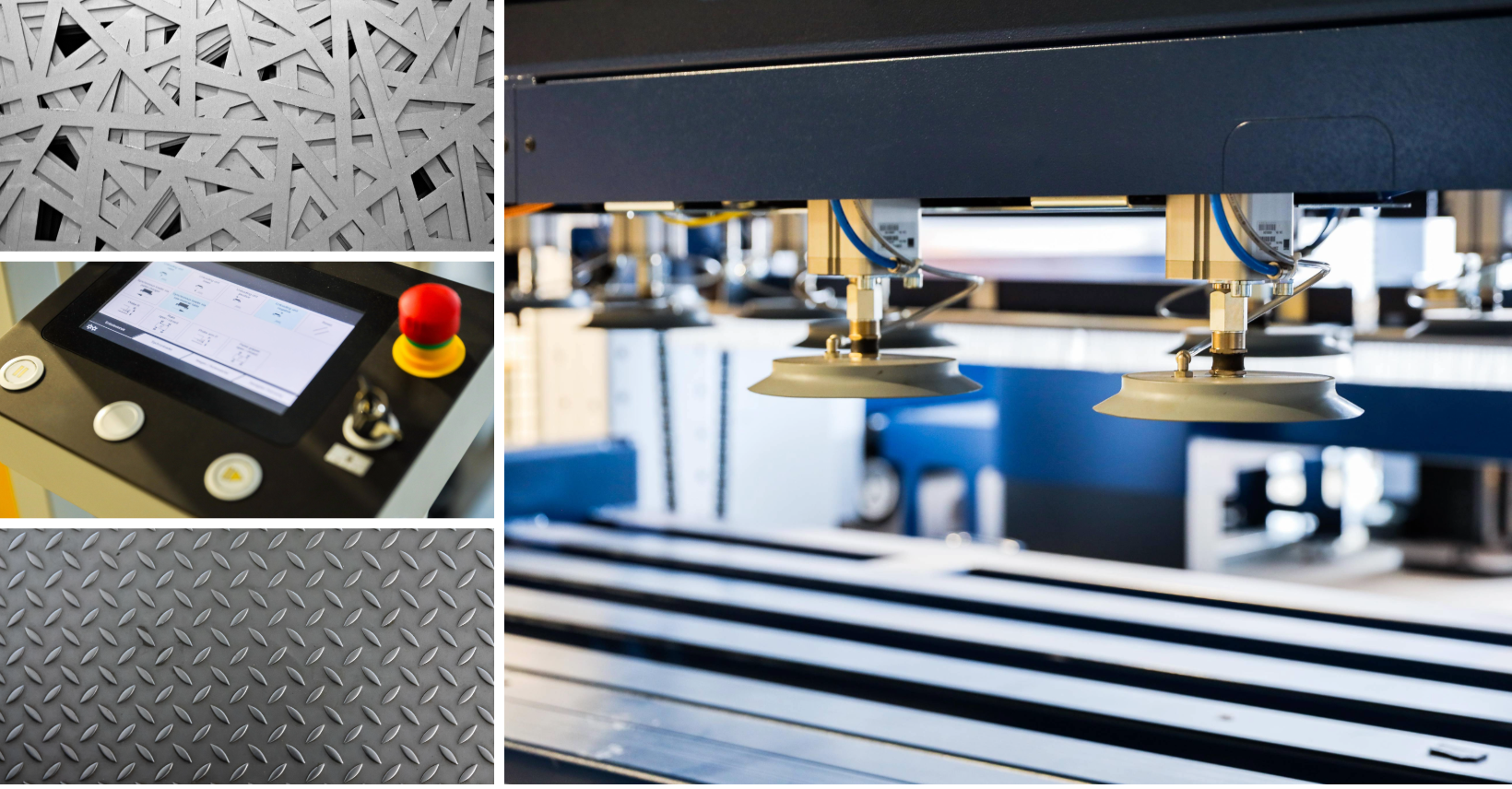
Key Benefits Of Fibre Laser Cutting Sheet Metal
Laser cutting offers significant advantages over alternative sheet metal cutting methods. Here are some key benefits of laser cutting sheet metal:
Speed: Laser cutting is a fast process, allowing for quick production turnaround times. The laser beam can cut through the material at high speeds, resulting in efficient and time-saving operations.
Precision: Laser cutting provides exceptional precision and accuracy. The focused laser beam can create intricate and detailed cuts with tight tolerances, ensuring high-quality results.
Versatility: Laser cutting is highly versatile and can be used on a wide range of metals such as mild steel, stainless steel, aluminium brass, and copper. It can handle various thicknesses and is suitable for both simple and complex shapes.
Cost-Effective: Laser cutting offers cost-effective solutions. The speed and efficiency of the process reduces labour costs, and the minimal material waste helps optimise material usage, resulting in cost savings.
Minimal Heat Affected Zone: Laser cutting produces a small heat-affected zone, minimizing the risk of material distortion or damage. This is particularly important for delicate or heat-sensitive materials.
Flexibility: Laser cutting allows for flexibility in design and customisation. It can easily accommodate changes or modifications, making it ideal for prototyping or small production runs.
Automation: Laser cutting can be integrated into automated systems, enabling continuous and efficient production. This automation capability increases productivity and reduces labour requirements.
Non-Contact Process: Unlike metal guillotines, laser cutting is a non-contact process, which means there is no physical force applied to the material. This reduces the risk of damage or deformation, especially for delicate or thin materials.
| Purpose/ Activity | Lawful basis for processing including basis of legitimate interest |
|
To process and deliver your order including: (a) Manage payments (b) Collect and recover money owed to us |
(a) Performance of a contract with you (b) Necessary for our legitimate interests (to recover debts due to us) |
|
To manage our relationship with you which will include: (a) Notifying you about changes to our terms or privacy policy (b) Asking you to leave a review or to take a survey |
(a) Performance of a contract with you (b) Necessary to comply with legal obligation (c) Necessary for legal interests (d) to keep our records updated and to study how customers use our products and services |
| To enable you to partake in completing a survey |
(a) Performance of a contract with you (b) Necessary for our legitimate interests (to study how customers use our services, how to develop them and grow our business) |
Things to Consider When Designing a Laser Cut Profile
When designing a profile for laser cutting, there are several guidelines to consider ensuring successful and accurate results. Here are some simple guidelines to keep in mind:
Material Selection: Choose a material that is suitable for your design. Common materials include metals (such as steel, stainless steel, aluminum, mild steel, brass, and copper. Different materials have different cutting characteristics, so it's important to select the appropriate material for your design.
Design Software: Use vector-based design software like Adobe Illustrator, CorelDRAW, or AutoCAD to create your design. These software programs allow you to create precise and scalable vector graphics that can be easily converted into cutting paths for the laser. If you do not have access to this type of software then we can often draw the profile for you from a simple dimensioned sketch.
Splines: It’s best to avoid using splines if possible. They can be problematic, especially when dealing with laser cutters. The software used by laser cutters often struggles to interpret splines correctly, leading to unsatisfactory outcomes. Instead, opt for arcs and lines, as they are much more readable for laser cutting software and will help avoid any potential issues.
Line Width: Use thin, single-stroke lines for your design. The laser follows the path of the lines, so using thin lines ensures accuracy and precision. Avoid using thick lines or filled shapes, it only needs to be an outline.
Closed Shapes: Ensure that all shapes in your design are closed. Open shapes or lines that do not form a closed loop will confuse our software and the profile to be cut may not be recognised. If you have open shapes, make sure to close them by connecting the endpoints.
Overlapping Lines: Avoid overlapping lines in your design. Hidden overlapping lines can cause the laser to cut the same area multiple times, resulting in excessive material removal and potential damage to the material or the laser itself.
Fonts and Lettering: If your design includes lettering remember to bridge letters so that the centres are retained if the letters are cut from within a profile. Letters such as R, A, O will often need ‘bridging’ but it will depend on the font style you have chosen for your design.
Minimum Detail Size: Consider the minimum feature size that the laser can accurately cut. This depends on the material type and thickness. If your design includes small details or intricate patterns, ensure that they are within the minimum feature size limits. As a rule of thumb for a profile to laser cut well the detail should be equal to or more than the thickness it is cut from. But there are situations when the detail can be smaller.
Hole Placement and Folding: Avoid placing holes too near the bend as they may deform. Ensure that the holes are position at a distance exceeding the minimum recommended
Nesting and Material Efficiency: Whilst you are welcome to send your profiles all in one file our software will need to separate them out into individual files. Our software is optimised to maximise sheet usage, so you don’t have to.
We can provide some guidance to ensure that your design is suitable for laser cutting and folding.
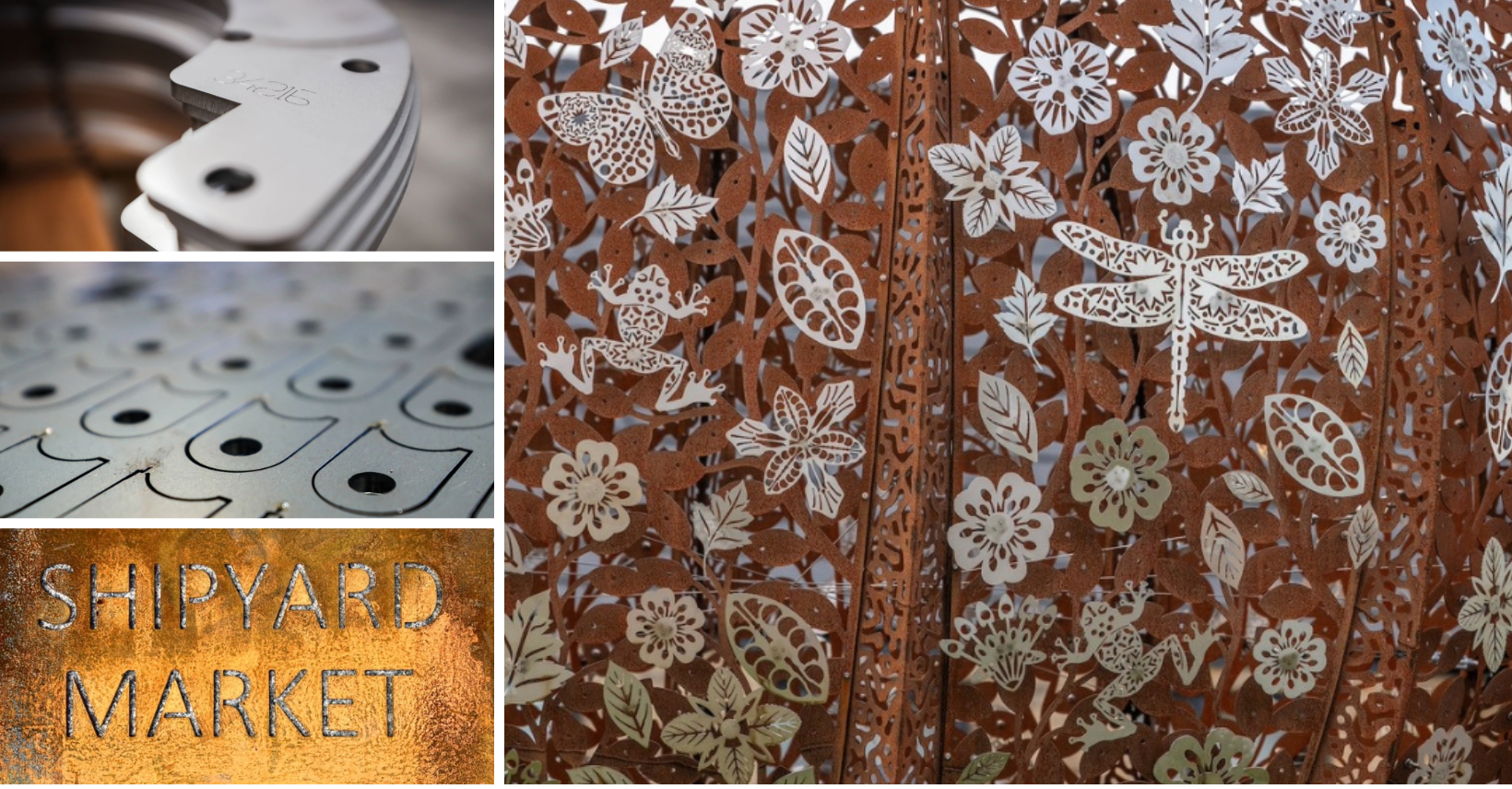
Fibre Laser Cutting: Advantages and Disadvantages
Fibre laser cutting is a highly efficient, precise, and super-fast method of cutting metal sheets using a laser beam. This technology has revolutionised the manufacturing industry by offering numerous advantages over traditional cutting methods such as plasma and C02 laser cutting. However, like any other technology and methods of cutting sheet metal, fibre laser cutting also has its limitations and disadvantages.
Here we will explain some advantages and disadvantages of sheet metal cutting using a fibre optic laser cutting.
Advantages of Sheet Metal Fibre Laser Cutting
Precision: One of the biggest advantages of sheet metal laser cutting is its exceptional precision. Fibre laser cutting machines can achieve a high level of accuracy and precision, allowing for intricate and complex designs to be cut with ease. This precision ensures that the final product meets the specifications and results in high-quality parts and profiles.
Versatility: Fibre laser cutting is a versatile process that can be used to cut a wider range of materials and greater thickness than C02 laser cutters, including stainless steel & aluminium as well as highly reflective material that were not suitable for c02 laser cutters such as copper, brass, and bronze This versatility makes it an ideal choice for various industries, such as automotive, marine, renewable energy, electronics, and architecture.
Speed: Fibre laser cutting is a process compared to traditional cutting methods. Fibre lasers are super-fast, can cut through the metal sheet quickly and efficiently, reducing production time and increasing productivity. This speed advantage is particularly beneficial for large-scale manufacturing operations and urgent client requirements and express next day cutting services.
Minimal Material Waste: Unlike cutting methods such as guillotining and shearing, Fibre Laser cutting is a non-contact process, which means there is no physical contact between the cutting tool and the material being cut. This results in minimal material waste, as the laser beam only removes the necessary material.
Complex Shapes and Designs: Fibre Laser cutting allows for the cutting of complex shapes and designs that would be difficult or impossible to achieve with traditional cutting methods such as plasma, and guillotine metalworking machines. The laser beam can follow intricate patterns and designs, enabling the production of highly detailed and customised profiles in sheet metal.
Disadvantages of Sheet Metal Fibre Laser Cutting
What you Need to Know
Material Limitations: While sheet metal fibre laser cutting is versatile, there are materials that are not suitable for this cutting method. For example, leather, wood, plywood, MDF, carbon fibre, cardboard, paper, plastics, textiles, acrylic and composite materials cannot be cut on a fibre laser cutting machine. Fibre lasers are designed for cutting sheet metal, with the exception of silver, which due to the highly reflective properties is not a metal suitable for this type of cutting process.
Heat Affected Zone: Laser cutting generates heat, which can result in a heat-affected zone (HAZ) around the cut edges. This HAZ may cause changes in the material properties, such as hardness and strength. The melting and subsequent cooling of the material changes the material structure. This effect is more obvious in mild/carbon steel cutting where oxygen is used as the cutting gas. The interaction of oxygen with the heated metal causes a reaction that heats the material to a greater temperature.
Blemishes and Scratches: Laser cut components will possibly need further finishing to ensure they are ‘ready for use’ or to achieve a uniform appearance. It is common for laser cut items to have blemishes/scuffs/scratches, primarily on the back face of the profile. There are two reasons for this damage to occur and both are caused by the laser cutting bed. Consisting of parallel rows of ‘pointed’ copper slats spaced 50 mm apart, when the laser beam comes into contact with a slat then splatter (Flashback) is deposited onto the reverse face of the profile. The second is caused by loading and unloading the sheet.
The slats are designed in a way to minimise contact with the bottom of the sheet, thereby reducing interference with the ejected material while still offering adequate support to the sheet during cutting.
Lead-ins/Tagging and Pips: A Lead-in is where the laser first pierces the material to start (lead in) cutting the design. The laser almost finishes the cut at this same point, but not quite, this is intentional, leaving a very small uncut section, commonly called a tag , the tag plays a crucial role, keeping the part and its cut-out sections in place and attached to the sheet so they do not fall into the waste collection bins beneath the laser cutting bed. Additionally, it helps to prevent the part from shifting or tipping during the cutting process Any external or internal cut on a part, whether straight or curved, usually needs its own lead-in. When the part is removed from the sheet, the tag is ‘snapped/broken,’ leaving behind a small protrusion often called a 'pip or tag' on the cut edge(s) of the laser cut profile.
Distortion, Warping, Bowing and Flatness: Laser cut parts may warp or curve during the cutting process for several reasons. Uneven heating and cooling can cause materials to expand and contract unevenly, resulting in distortion, warping, bowing, or flatness issues. The intense heat of laser cutting heats some areas of the material more than others. As the material cools at different rates, uneven contraction occurs, leading to warping or bowing. More intense laser cutting generates more heat, increasing the likelihood of uneven expansion and contraction, which distorts the final part.
Conclusion
Sheet metal laser cutting has numerous advantages, including precision, accuracy, versatility, speed, minimal material waste, and the ability to create complex shapes and designs and is very economical. However, it also has its limitations including some material and thickness restrictions, and the potential for a heat-affected zone. Despite these disadvantages, laser cutting is the perfect sheet metal cutting solution in the manufacturing industry due to its overall efficiency, quality, accuracy, speed, and cost effectiveness.
Frequently Asked Questions
We've compiled the most common questions in one place. Your question might be here We've compiled the
How can I obtain a quotation?
We're here to help.
What are the best files to send to obtain a quotation?
We're here to help.
Can you give me a ball park price over the phone?
We're here to help.
What are the best files to send to obtain a quotation?
We're here to help.
Can you give me a ball park price over the phone?
We're here to help.
Our works
Contact Information
sales@lasermaster.co.uk+4401209821902United Downs Industrial Park,St Day, Redruth, Cornwall
TR16 5HY
